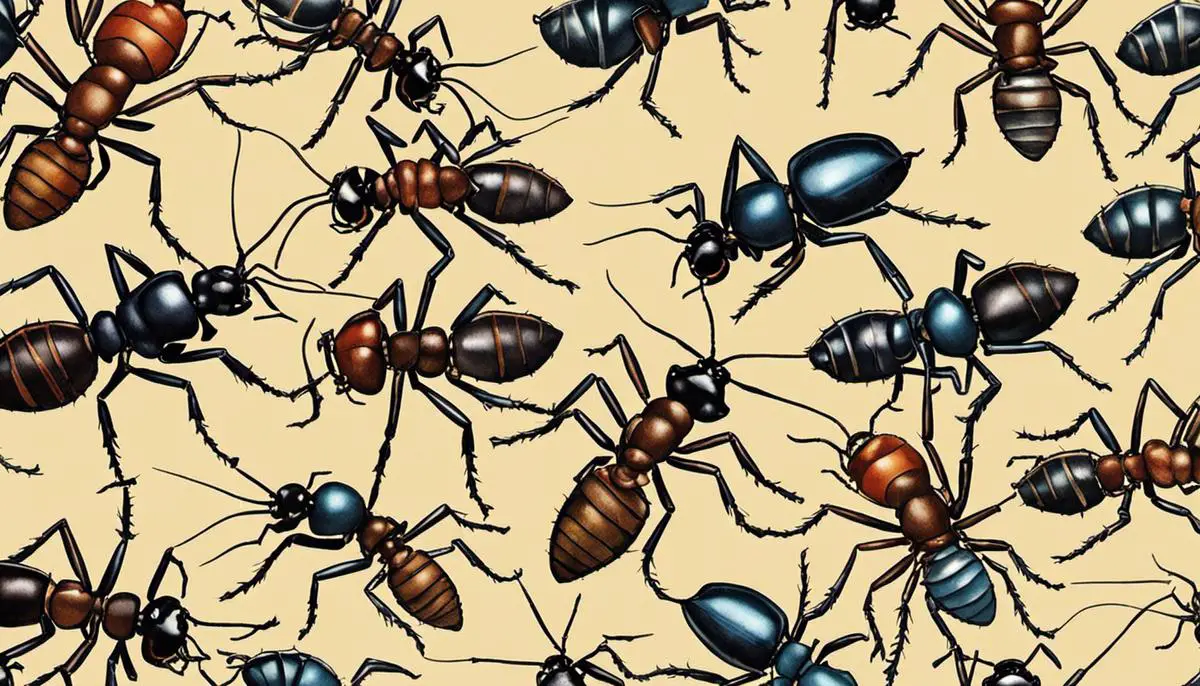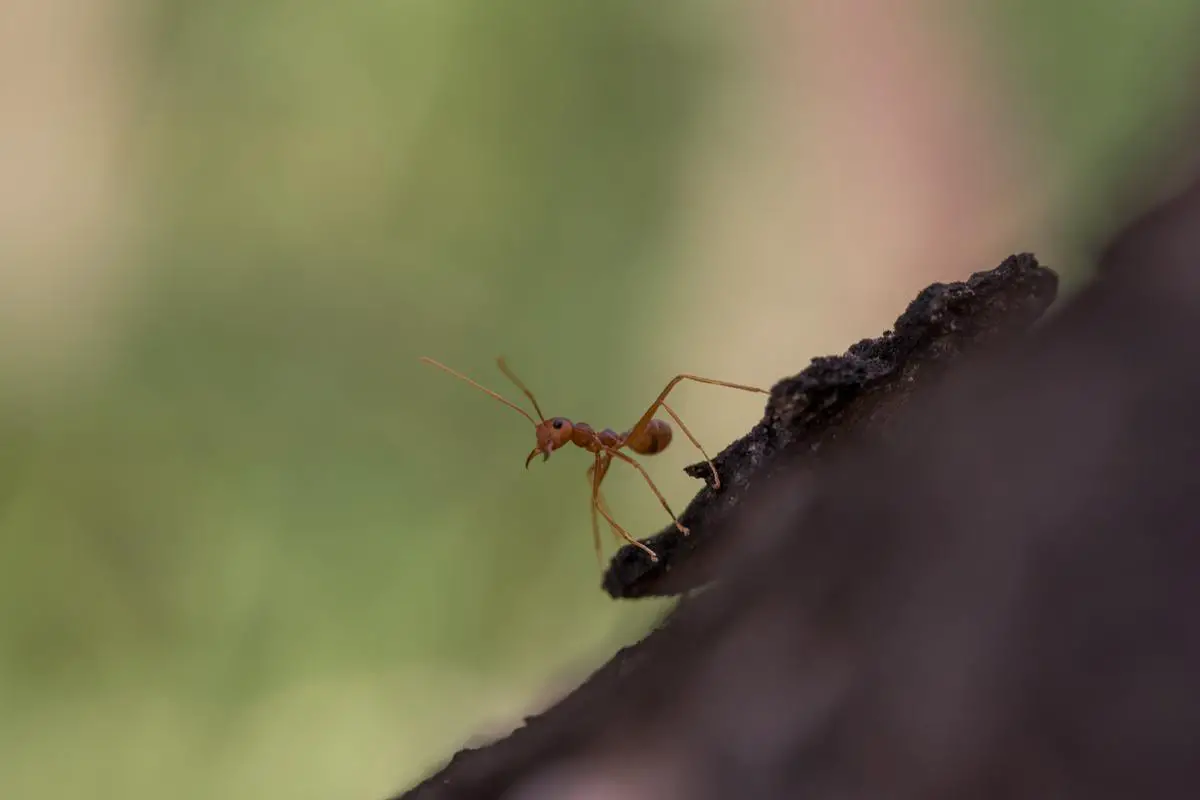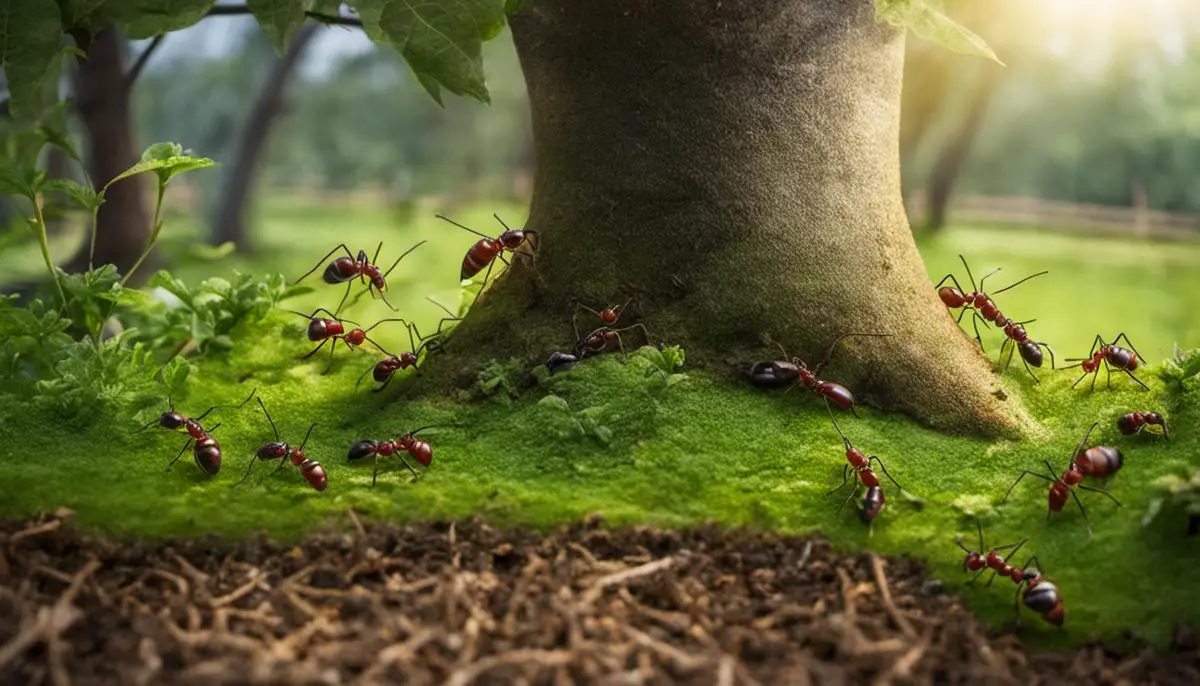Effective Strategies to Eliminate Ants in Your Garden
Ants play a crucial part in the ecosystem; they break down organic matter, help in soil aeration, and even control other pests. Yet, if they become too numerous in your garden, they can cause harm to your plants, invade your home, or even deliver you some painful bites. Is there a way to maintain a balance?
Can you control the ant population in your garden without causing undue harm to these industrious insects or the environment?
This comprehensive guide will unveil a deeper understanding of different types of garden ants and their unique characteristics.
You’ll also discover a broad range of natural and chemical methods for safe and effective ant control, along with insights on how to prevent future ant infestations. The goal is to achieve a garden that’s not only ant-free but also healthy and thriving.
Understanding the Types of Garden Ants
Understanding Various Types of Garden Ants
There are several types of ants commonly present in gardens that may range from helpful to destructive, based on their behavior and impact on the environment.
Carpenter Ants
These ants are typically found in damp, decaying woods as they excavate wood to build their nests. Carpenter ants are generally large and usually black, but some species may be yellowish or reddish. They do not actually eat wood but can still cause damage by hollowing it out.
Fire Ants
Fire ants are known for their stings which produce a strong, fiery sensation. They are typically small and can vary in color from red-brown to black. Fire ants tend to create large, visible mounds in open areas, but they can also make nests under the soil surface in moist or shaded areas such as under rocks, potted plants, or other structures in your garden.
Odorous House Ants
Odorous house ants are small and dark brown or blackish. The term “odorous” comes from a distinct, unpleasant odor described as similar to rotten coconuts when these ants are crushed. They feed on dead insects, sugary sweets, and meats. They also attracted to moisture and can nest in a variety of places such as wall cracks, under carpets, or under your mulch in your garden.
Argentine Ants
Argentine ants are small, light to dark brown ants that are attracted to moisture and sweet foods. They often invade households in search of these resources. Outside, they often build shallow nests in moist soil next to or under buildings, along sidewalks, or beneath boards and plants.
Acrobat Ants
Acrobat ants are named for their tendency to acrobatically raise their abdomen over their thorax when disturbed. They are small to medium-sized ants and can be a variety of colors from yellow-brown to brown and black. Acrobat ants often nest in moist or rotted wood and may create nests in your garden in fallen trees or stumps.
Understanding the type of ant you are dealing with will help determine the most effective method of removal. It’s important to note that not all ants are a nuisance or harmful, and some can actually contribute positively to your garden ecosystem by turning soil and preying on other pests.

Natural and Chemical Methods of Ant Control
Natural Ant Control Methods
One effective natural method to control ants in the garden is through the use of beneficial insects. Many insects such as beetles, spiders, and centipedes are natural predators of ants and can help lower the ant population in your garden. However, keep in mind that these beneficial insects should be controlled in the right numbers to prevent them from becoming pests themselves.
Another natural method is the use of plants that repel ants. Some plants like peppermint, tansy, and spearmint are natural ant deterrents, and incorporating these plants into your garden can help in discouraging ants.
Lastly, the use of various homemade sprays is another effective, natural ant control method. For example, sprays made from vinegar, cinnamon, essential oils, or dish soap can deter ants when sprayed around affected areas. These sprays don’t kill the ants but will deter them from regular paths.
Chemical Ant Control Methods
Chemical methods for ant control are often used when natural interventions are insufficient. If the ant infestation is large, chemical control becomes necessary. Ant baits are a common form of chemical control. These baits contain a food source mixed with a slow-acting poison that worker ants bring back to the colony, potentially poisoning the colony over time.
Another chemical method is the use of insecticides. These can either be applied to soil as a preventative measure or can be directly applied to active colonies or trails to eliminate ants on contact. However, these solutions should be used with caution as they can have harmful effects on other insects and the surrounding environment.
Effectiveness and Environmental Impact
The effectiveness of ant control methods varies. While natural methods are generally non-toxic and environmentally friendly, their success largely depends on the size and type of ant infestation. These methods may take longer to show results but can efficiently manage smaller infestations.
On the other hand, although chemical methods are highly effective, they also come with risks. Chemical pesticides can negatively impact the environment by contaminating soil and water sources or harming beneficial insects and other wildlife. They can also pose health risks to humans, particularly those with chemical sensitivities or allergies.
Therefore, it’s important to consider the impact and weigh the pros and cons before deciding which method to use. Always prioritize natural methods, only resorting to chemical solutions when absolutely necessary.

Photo by andremouton on Unsplash
Preventive Measures Against Ant Infestations
Understanding What Attracts Ants
Firstly, it’s crucial to understand what attracts ants to your garden. Ants are primarily attracted to moisture and food sources. Rotting or damp wood can provide a perfect nesting site for certain ant species. Also, bits of sweet fruits, sugary organic waste, and spilled food items can act as a magnet for them. Some types of ants tend to aphids, tiny insects that can damage your plants, creating a mutually beneficial relationship as ants feed on the honeydew aphids produce.
Proper Cleanliness and Maintenance
Maintaining a clean and well-kept garden is key to deterring ant infestations. Regularly clean and turn compost piles to prevent an attractive environment for ants. Remove any rotting wood immediately, keep the area dry as much as possible, and ensure no food waste is left lying around. Regularly tending to your garden can help spot potential infestation sites early and eliminate them immediately.
Planting Ant Deterrent Plants
Certain plants repel ants naturally and can be used as an effective deterrent in your garden. These include peppermint, cinnamon, and tansy. Planting these can provide a natural, organic, and aesthetically pleasing barrier against ants.
Using Natural Ant Repellants
There are also several natural deterrents available that can be sprinkled around your garden to discourage ants. Diatomaceous earth, a powdery substance made from the tiny, fossilized remains of aquatic organisms, can be sprinkled around the garden. It kills ants by puncturing their exoskeletons and drying them out. Coffee grounds, cinnamon, vinegar, and citrus peel can also be used as natural repellants. Remember to reapply these after heavy rain.
Applying Ant Baits and Pesticides
In severe cases, ant baits and pesticides may be used for prevention. These are placed near ant paths or near the colony if it can be located. They contain a slow-acting poison mixed with food attractants. While immediate results may not be visible, the ants carry this bait back to their colony, effectively eradicating the problem at the source.
Professional Help
For severe or reoccurring ant infestations, professional pest control services may be required. They can better identify the species of ants, their nesting habits, and the best ways to eradicate them based on their life cycle. It’s advisable to consult a professional if you’re unsure or if previous efforts to get rid of the ants have failed.

By understanding the types of ants we share our gardens with, as well as their behaviors, we can develop targeted, effective control plans that are good for both the environment and our health.
The process doesn’t stop there, though. Effective ant control involves a proactive approach, from using natural deterrents to keeping your garden tidy to prevent ant invasion.
While it may seem like a daunting task, armed with the knowledge of ant types, various control methods, and anticipating preventative measures, every gardener—be it an enthusiast or a seasoned professional—can create and maintain an ant-free garden efficiently.
Remember, our goal isn’t to wage an all-out war on ants, but to manage them in a way that allows both your garden and the ants to thrive.

